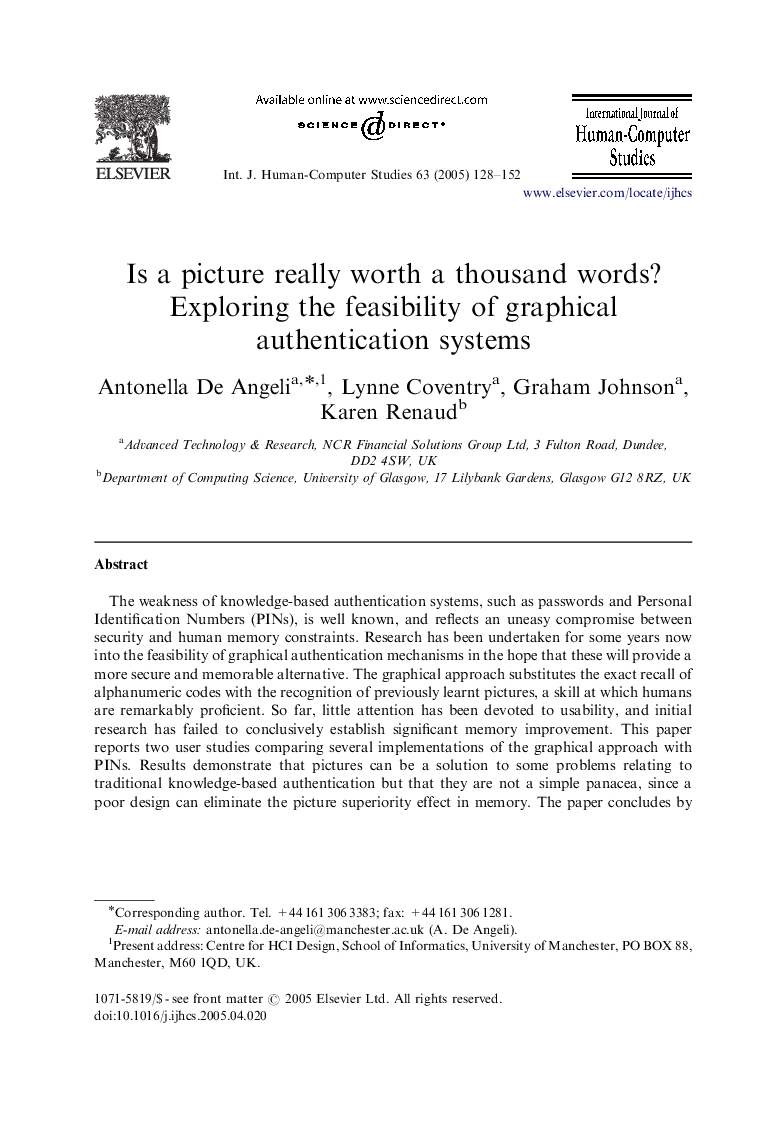| Article ID | Journal | Published Year | Pages | File Type |
|---|---|---|---|---|
| 9652490 | International Journal of Human-Computer Studies | 2005 | 25 Pages |
Abstract
The weakness of knowledge-based authentication systems, such as passwords and Personal Identification Numbers (PINs), is well known, and reflects an uneasy compromise between security and human memory constraints. Research has been undertaken for some years now into the feasibility of graphical authentication mechanisms in the hope that these will provide a more secure and memorable alternative. The graphical approach substitutes the exact recall of alphanumeric codes with the recognition of previously learnt pictures, a skill at which humans are remarkably proficient. So far, little attention has been devoted to usability, and initial research has failed to conclusively establish significant memory improvement. This paper reports two user studies comparing several implementations of the graphical approach with PINs. Results demonstrate that pictures can be a solution to some problems relating to traditional knowledge-based authentication but that they are not a simple panacea, since a poor design can eliminate the picture superiority effect in memory. The paper concludes by discussing the potential of the graphical approach and providing guidelines for developers contemplating using these mechanisms.
Related Topics
Physical Sciences and Engineering
Computer Science
Artificial Intelligence
Authors
Antonella De Angeli, Lynne Coventry, Graham Johnson, Karen Renaud,
